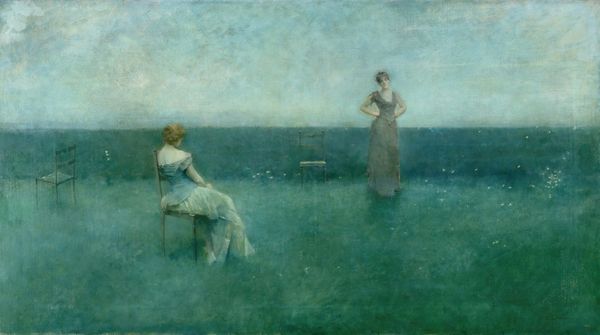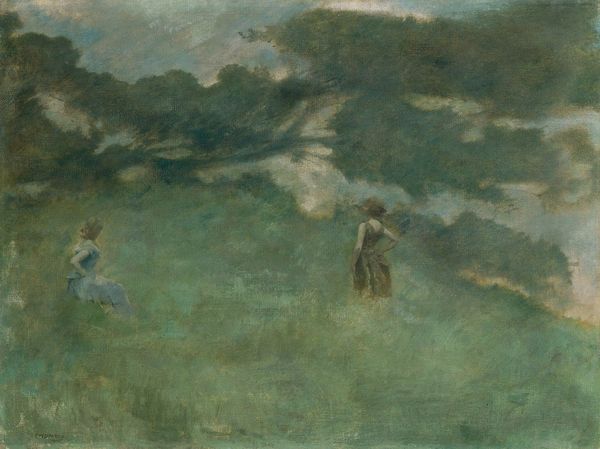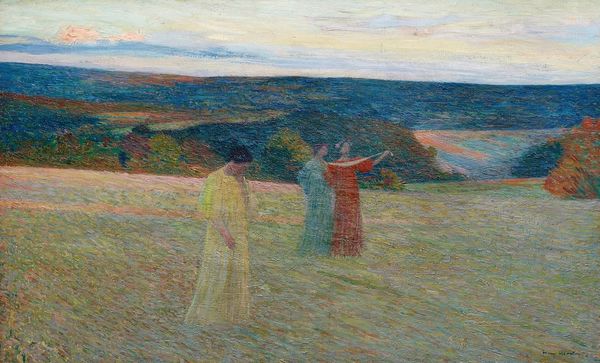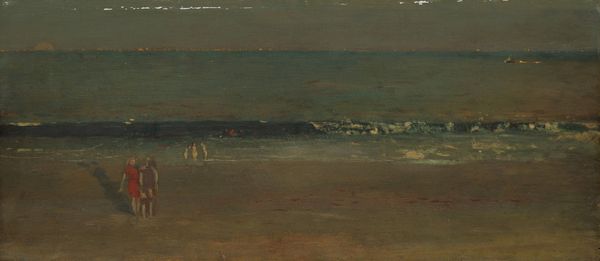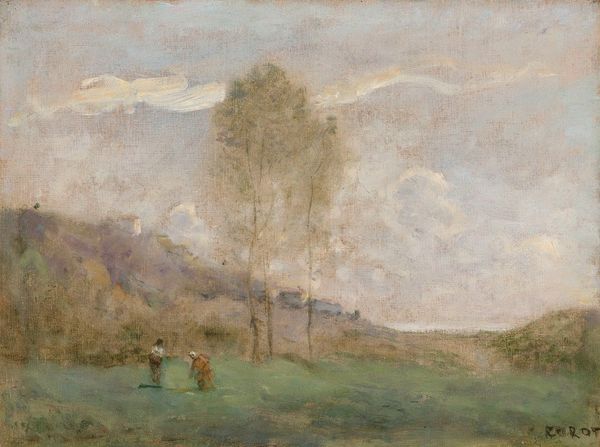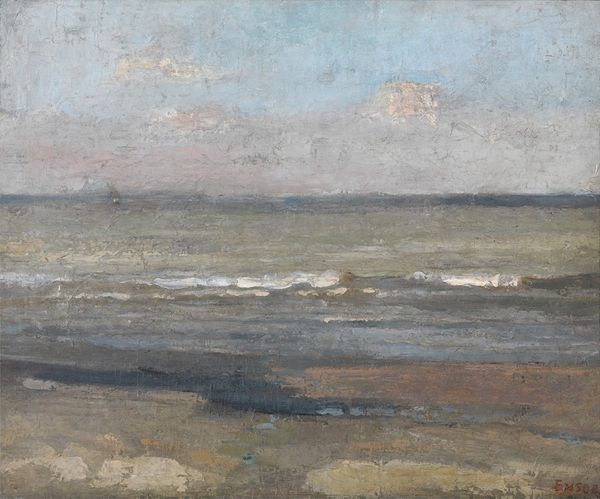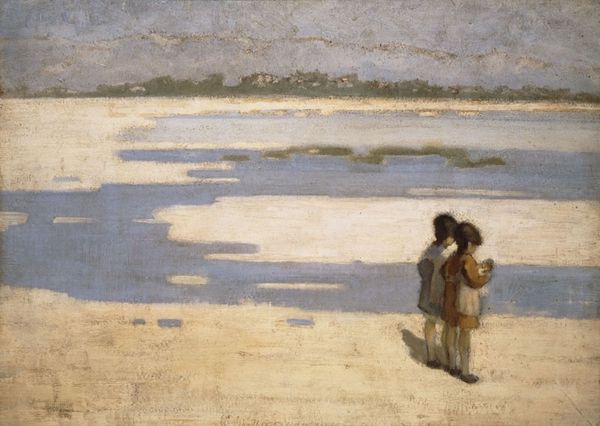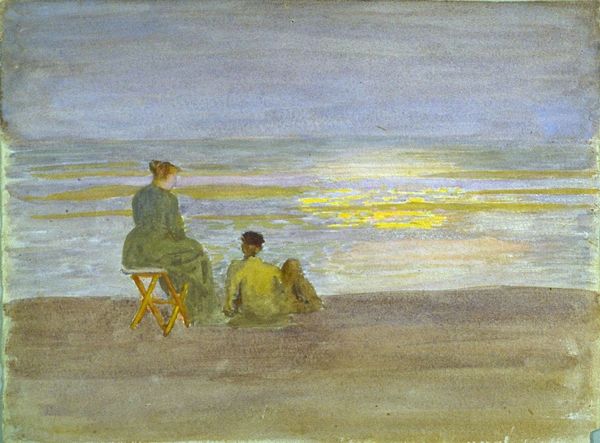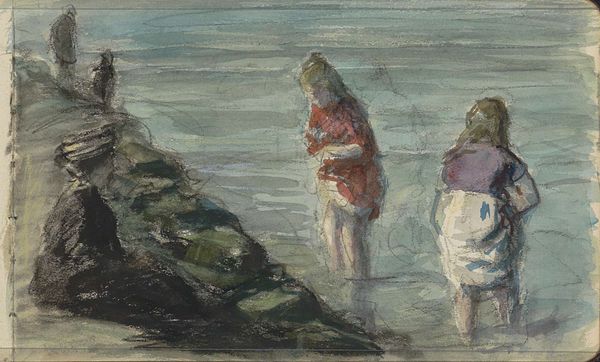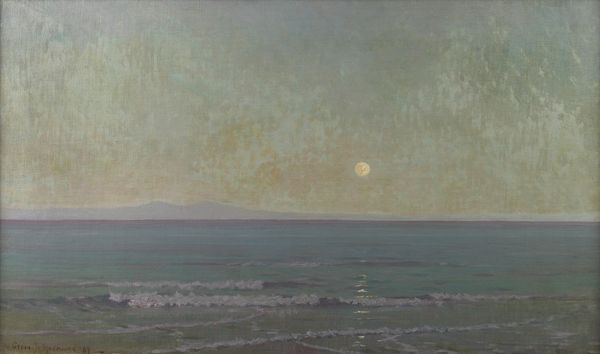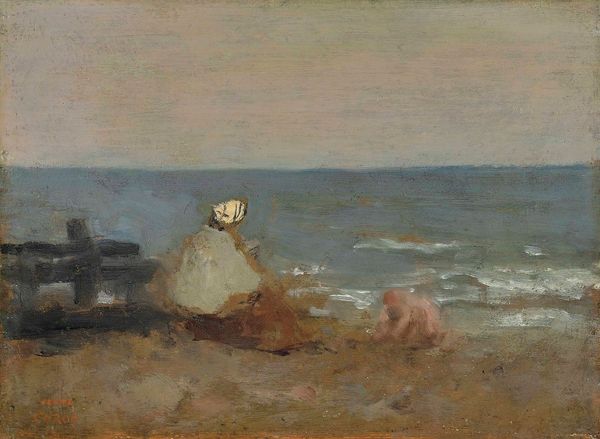
Dimensions: height 36 cm, width 46 cm
Copyright: Rijks Museum: Open Domain
Editor: This is Jan Toorop’s “Vrouwen aan zee,” or "Women by the Sea," painted sometime between 1885 and 1897 using oil paint. It’s currently housed at the Rijksmuseum. The figures seem very subdued; they are staring out at the sea and appear almost melancholy. What’s your take on it? Curator: It's important to consider the materiality and the artistic labor that went into producing this piece. Notice the brushstrokes and the visible layers of oil paint. This wasn't just about depicting women by the sea; it was about the *process* of making an image. How does the visible layering of paint contribute to the mood? Editor: I see what you mean. It’s less about perfectly representing a scene and more about the physical act of applying the paint. The visible brushstrokes definitely add a certain texture and almost roughness. Curator: Exactly. And that roughness, that visible process, brings the labor of the artist to the forefront. Consider the socio-economic context. Who was buying art like this, and what kind of labor went into producing the raw materials for the paints themselves? Editor: That's interesting. I hadn’t thought about the material sourcing. The paints themselves were products of labor too. Curator: Indeed. And thinking about that process—from pigment extraction to the final brushstroke—allows us to challenge this piece’s placement within “high art.” It acknowledges the collaborative aspect and deconstructs traditional art historical narratives that often only emphasize the artist's individual genius. Do you see how this perspective allows for an alternative appreciation of the image? Editor: Definitely! Looking at the visible brushstrokes and thinking about the material sourcing really grounds the image, giving it a depth beyond just the visual scene. I hadn't considered how it challenges ideas of "high art" before, that's a completely new perspective. Curator: Precisely. That focus on production brings forth new narratives and enriches our understanding of Toorop’s painting.
Comments
No comments
Be the first to comment and join the conversation on the ultimate creative platform.
